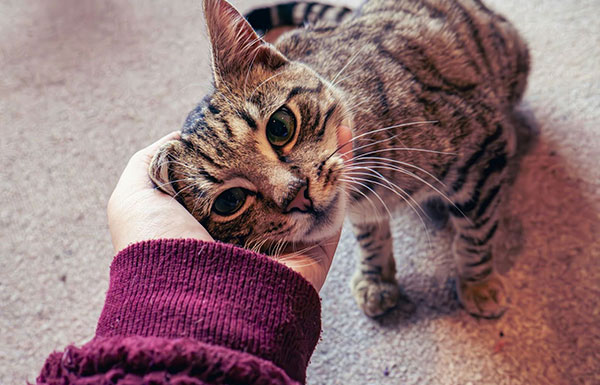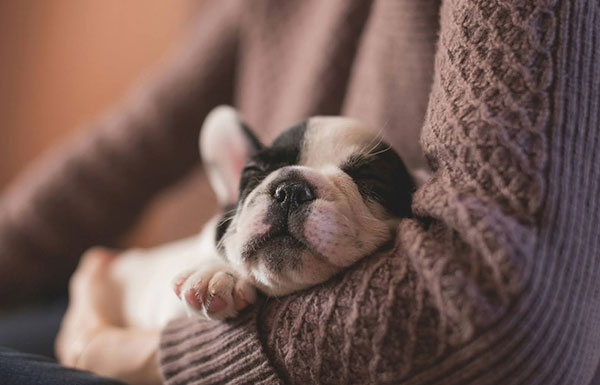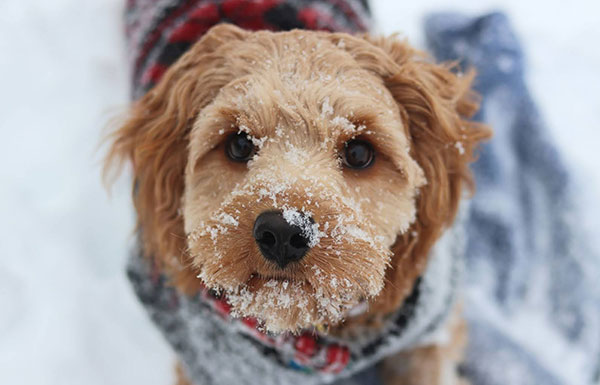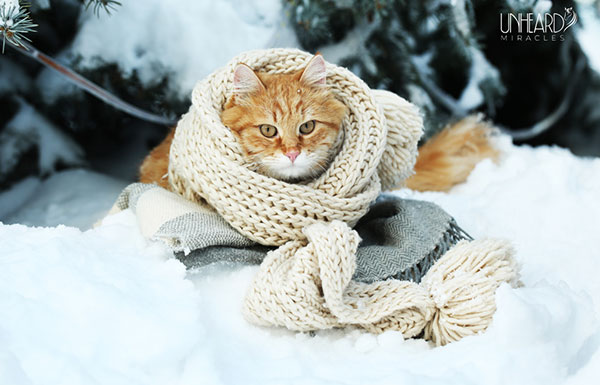Winter is a beautiful season, but it carries challenges for pets. Cold temperatures, icy surfaces, and indoor hazards can put your furry friend at risk. Knowing the right tips to protect pets in winter ensures your companion stays healthy and warm. Below, you’ll find essential steps to help keep pets safe during cold weather.

1. Adjust Your Pet’s Diet for the Season
Pets need proper food intake to stay active and warm during winter. Food provides energy, and that energy helps maintain body heat.
However, not all pets need extra food. Pets with thin coats or low body fat require more calories to handle the cold. On the other hand, pets with thick fur or higher fat reserves may need fewer calories. Be mindful of your pet’s unique needs, and always consult your vet if you are unsure.
2. Keep Your Home Safe for Pets
In winter, your pet spends more time indoors, increasing their exposure to household hazards. Keep harmful items like cleaning products, electrical wires, and medications out of reach. Also, be extra careful with new winter items, like space heaters and fireplaces.
For example, never leave a space heater running while you’re away. If you enjoy a warm fireplace, keep your pet at a safe distance from unpredictable embers.
Adding distractions like chew toys or scratching posts can also help keep pets entertained and safe. If you use snow-melting products outside your home, choose pet-safe options. Standard deicers often contain chemicals harmful to pets’ paws.
3. Protect Your Pet’s Paws
Daily outdoor walks are necessary, even in cold weather. But icy sidewalks, snow, and rock salt can harm your pet’s sensitive paw pads.
Using a paw protector cream can create a barrier against harmful substances. Products like Paw Guard also restore moisture to dry or cracked paws. Booties are another excellent option to shield paws from ice and cold. However, ensure your pet is comfortable wearing them first.
After every walk, wipe your pet’s paws with a damp cloth to remove debris or harmful chemicals.
4. Limit Outdoor Time
What temperature is unsafe for animals? Understanding this is essential. It’s likely too cold for your pet if it’s too cold for you.
Before heading outside, ensure your pet is wearing proper gear, like a jacket or sweater. Keep outdoor trips short, and avoid exposing them to freezing winds or icy conditions. Always use a leash and ensure your pet’s microchip information is up to date, especially if snow is on the ground.
Visibility becomes poor in the evening. If you walk your dog after sunset, a reflective leash or collar can make you and your pet more visible to others.
5. Set Up an Indoor Potty Area
Sometimes, going outside may not be an option. Harsh weather can make outdoor potty breaks uncomfortable or unsafe. Keep training pads, like Wee-Wee® pads, in a warm area of your home for such days.
For cats, place their litter box in a cozy spot away from drafts or chilly areas like garages. This makes it easier for them to stay comfortable while doing their business.

6. Know the Side Effects of Cold Weather on Dogs
Cold weather can impact pets’ health in several ways. Wet or exposed skin can lead to frostbite, especially on ears, tails, and paws. Symptoms of frostbite include blue or gray skin discoloration, swelling, and cold patches of skin.
Can animals get sick from cold weather? Yes, they can. Hypothermia is another serious risk during winter. It occurs when a pet’s body temperature drops dangerously low. Symptoms include muscle stiffness, shivering, and breathing difficulties.
If you notice these signs, move your pet to a warm, dry area and contact your vet immediately.
7. Stock Up on Winter Essentials
Emergencies like power outages or snowstorms can happen unexpectedly. Prepare a pet first aid kit with essential items such as:
- Bandages
- Tweezers
- Cotton balls
- Hydrogen peroxide
- Gauze pads
- Latex gloves
- Pet-safe medications
Also, keep a four-day supply of pet food, water, and any prescription medications they may need. Being ready can save valuable time during emergencies.
8. Grooming is Crucial
Regular grooming is vital during winter. Brushing your pet’s fur removes tangles and prevents mats, which can trap moisture and make them colder.
Trim the hair around their paws to reduce salt or ice buildup. Bathing is also important, as it prevents dry skin and keeps their coat healthy. Side effects of cold weather on dogs include them getting cold after baths in winter. Use warm water and a pet-friendly shampoo to avoid irritation.
9. Watch Out for Antifreeze
Antifreeze is a common winter hazard. It contains ethylene glycol, a chemical that smells sweet but is highly toxic to pets. Even a little amount can cause kidney failure or death.
Always clean up antifreeze spills and store the product securely. If you doubt your pet has ingested antifreeze, symptoms like drooling, vomiting, and excessive thirst may appear. Contact your vet immediately if this occurs.
10. Check Under Your Car
During cold weather, cats often hide under cars for warmth. Before starting your vehicle, check underneath and bang on the hood to ensure no animals are hiding there.
Even if you don’t own a cat, stray animals in your area may seek shelter in your car. Taking this extra step can save a life.
11. Monitor Daylight Hours
Winter days are shorter and that’s why there is less daylight for outdoor activities. Plan walks or playtime during daylight hours whenever possible.
If you must go out at night, wear reflective gear and use a reflective leash. This ensures both you and your pet are visible to vehicles and other pedestrians.
12. Provide Warm Indoor Spaces
Your pet deserves a warm and cozy spot to relax indoors. Ensure their bed or resting area is placed away from drafts, cold floors, or unheated spaces.
Consider adding blankets to their bed or even getting a heated pet mat. These easy additions can make a significant difference in their comfort.
13. Acclimate Pets to Winter
Pet owners usually ask, “Can animals get sick from cold weather?” The answer is yes, they can, but there are ways to help them adapt to colder seasons. Gradually introducing your pet to colder temperatures can help them adjust. Start with short outdoor trips and gradually increase the time spent outside.
However, always prioritize your pet’s safety. Keep an eye on how they react to the cold. If they shiver or seem uncomfortable, bring them indoors immediately.
14. Keep Pets Entertained Indoors
Long winter days indoors can lead to boredom for your furry friends. Provide plenty of toys, puzzles, and interactive activities to keep them mentally stimulated.
Cats may enjoy scratching posts, while dogs might prefer chew toys or treat-dispensing puzzles. Some of the best tips to protect pets in winter include keeping them occupied, which helps them stay happy during the colder months.

15. Plan for Snow Play
Winter doesn’t have to be all caution and no fun. Playing in the snow with your pet can be a joyful experience! However, remember to dry them off thoroughly once playtime is over. Wet fur increases the risk of frostbite.
Conclusion
Winter offers opportunities for bonding and adventure. By following these tips to protect pets in winter, you can ensure your furry friend stays happy and healthy all season. Stay vigilant, plan ahead, and enjoy the magic of winter together!
